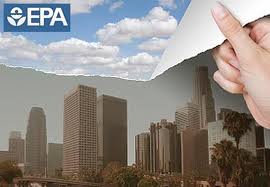The Environmental Protection Agency, or EPA, creates industry wide mandates regarding the need for using chemical cleaning solvents that do not put in danger workers, people, or the environment. The EPA calls this list of rules, or guidelines, MACT standards (Maximum...
MACT Standards

How does the EPA Regulate the Industrial Cleaning Industry?
The EPA (Environmental Protection Agency) develops regulations, also known as or called MACT (Maximum Achievable Control Technology) standards, requiring industrial organizations and other entities involved in possibly emitting hazardous toxins into the environment to...
Does your Vapor Degreaser meet MACT Standards?
Recently, the United States Environmental Protection Agency (EPA) inspected vapor degreasers at several plants, in a variety of industries, and unfortunately, every plant involved in the inspection did not comply with the EPA's Vapor Degreaser Maximum Available...
Search here
Don’t forget to share this post!
Categories
- 3D Printing Chemicals
- Acetone Cleaners
- Acids
- Additive Manufacturing
- Aerosol
- Aerospace Cleaners
- AK225
- Alcohols
- Anti Foaming Agents
- AQMD
- Aqueous Cleaning Agents
- Bulk Chemicals
- CBD
- Chemical Suppliers
- Chemistry of Cleaning
- Citrus Degreasers
- Clean Air Products
- Commodity Chemicals
- Contec Wipes
- Corrosion Inhibitors
- Daraclean
- Degreasing Agents
- Deicers
- Denatured Alcohol Cleaners
- Disruption of Chemicals
- Drying Agents
- Ecolink News
- Electrical Contact Cleaning Solutions
- Ethyl Acetate
- Evaporation Rate
- Extraction
- Flux Removal
- food grade solvents
- Green Chemistry
- Humectants
- Industrial Degreasers
- industrial green cleaning products
- Industrial Hygienist
- Industrial Pollution
- Interns
- IPA
- Lacquer Thinner
- Low VOC
- Lubricants
- MACT Standards
- Medical
- MEK
- Metal Pretreatment Chemicals Manufacturers
- Methanol
- Methyl Acetate
- MIL-PRF-680
- Military Cleaners
- Millipore
- Mineral Spirits
- MSDS
- N-Propyl Bromide
- NMP Solvent
- Non Flammable
- Oil Extraction
- Organic Cleaning Solvent
- OSHA
- Our Team
- Oxygen Scavengers
- Paint Strippers
- Parts Washer
- PCB Cleaning
- Pollution Prevention
- Precision Cleaning
- Recycling
- Resin Removal
- Rust Removal
- Safer Chemicals
- scale and corrosion inhibitors
- Scholarship Contest
- Sodium Hypochlorite
- soft washing
- Solar Panel Cleaning
- Solvent Replacement Strategies
- Solvents
- Surfactants
- Surgical Cleaning
- Sustainable Chemicals Strategy
- TCE
- Tidal Washers Product Blogs
- Toxic Chemicals
- Vapor Degreasing
- VOC
- Volatile Organic Compounds
- Water Treatment Chemicals
- White Oils
- Wind Turbine Maintenance
- Worker Safety


